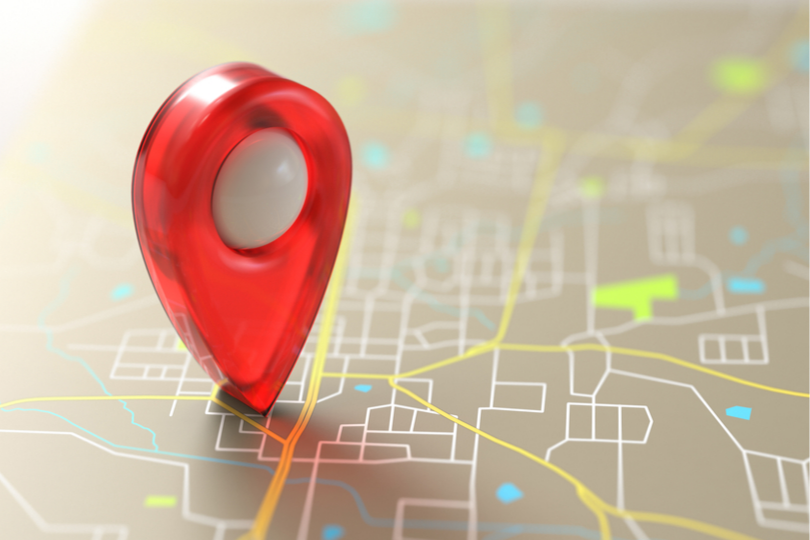How Easy is It to Locate a Cell Phone Off of 911 Call

How does 9-1-1 know your exact location every time? Does 9-1-1 use GPS? Is it programmed into your phone? The short answer: Sometimes they don't. You have to tell them. Especially if you're calling on a cell phone.
You may have this vision of a 9-1-1 call taker who answers the phone, takes down the details of your emergency, and then pushes a button and sends an officer to the location that magically appears on screen. There are a small number of cases where something similar to this might be true, but the majority of the time things are a lot more complicated.
In order to understand how 9-1-1 knows your location, you have to understand how that information is collected and stored. And to understand that, you have to be introduced to our Geographic Information Systems (GIS) team. The GIS team at NCT9-1-1 is responsible for managing addressing information and location data, and their work is why a telecommunicator can better pinpoint your location.
What happens after I call 9-1-1?
You've been in a car accident, or someone is breaking into your house, or you are facing any number of emergencies that warrant calling 9-1-1. But after you finish dialing, what happens next? How does your call get to the correct police department? How does the call taker on the other end know where to send a response?
Well, that depends. It depends on whether you're calling from a landline or a cell phone, and it depends on what kind of 9-1-1 infrastructure your local police department has.
Landline
When you initially dial 9-1-1, your call is routed to a building called a central office, which houses information that is managed by the telephone carriers. The central office uses your phone number to send your call to the correct tandem office, which is divided by regions. Within the NCT9-1-1 region, which is a hybrid of the old system and a Next Generation 9-1-1 system, we utilize GIS to route calls after they have gone through a central office. Based on the information stored in the tandem office, your call is routed to the correct Emergency Communications Center (ECC). At the same time as your call is going to the ECC, a Database Management System is queried and matches your phone number with your address and displays this information (known as the ALI, or the Automatic Location Information) to the 9-1-1 telecommunicator.
All of this happens in a matter of seconds, and if your landline is registered to your current address, 9-1-1 should get your exact address every time. They won't, however, be able to pinpoint your location within your house like the specific room or floor.
Wireless
On an Enhanced 9-1-1 system, calling 9-1-1 on a cell phone can yield different results. This is because the location information is provided by your cell phone carrier and each carrier is different. When you call on a cell phone, your location is determined by a combination of network triangulation and trilateration to gain an approximate location. By approximate location, we mean within 300 meters of the nearest cell phone tower. That's about three football fields.
If your police department or sheriff's office is on a Next Generation 9-1-1 network, which emphasizes more modern technology, and if they use device-based hybrid location accuracy, DBH, (technology similar to that used by ride-sharing apps), they may be able to pinpoint your location within 15 meters. All of the ECCs within the NCT9-1-1 region are equipped with DBH.
Android devices utilize Emergency Locations Services (ELS) to deliver DBH, and Apple devices utilize Hybridized Emergency Location (HELO). DBH uses a combination of different location beacons to identify a caller's location. These beacons include GPS, WiFi signals, and Bluetooth beacons.
How do they know my address?
The NCT9-1-1 region covers more than 10,000 square miles and is responsible for 9-1-1 services for 1.6 million people across North Texas. So how do we keep track of all of the addresses within our region and how do we update our system when new subdivisions or homes are built?
The NCT9-1-1 GIS team doesn't work alone. They work closely with addressing coordinators on the county level throughout our region to help maintain their data and ensure it's accurate. When a new subdivision is built, they will utilize hand drawn plats from the county addressing coordinator to address new roads, or even drive new roads with a GPS device. Recently, NCT9-1-1 has been utilizing drones to help speed this process up.
After new roads are addressed, NCT9-1-1 GIS updates the maps of the 9-1-1 telecommunicators within our region with the new information.
What does this mean for me?
Now you know a little bit more about how 9-1-1 works behind the scenes. Though the emergency number industry is always making new strides, and we're constantly trying to meet citizens where they are in this brave new world of technology, it's still important to know your location and to communicate it to the 9-1-1 telecommunicator. The fastest way for the call taker to know where you are is for you to tell them.
Subscribe and get e-mail notifications on our latest News & Media posts:
Source: https://www.nct911.org/how-location-works-for-911/
0 Response to "How Easy is It to Locate a Cell Phone Off of 911 Call"
Post a Comment